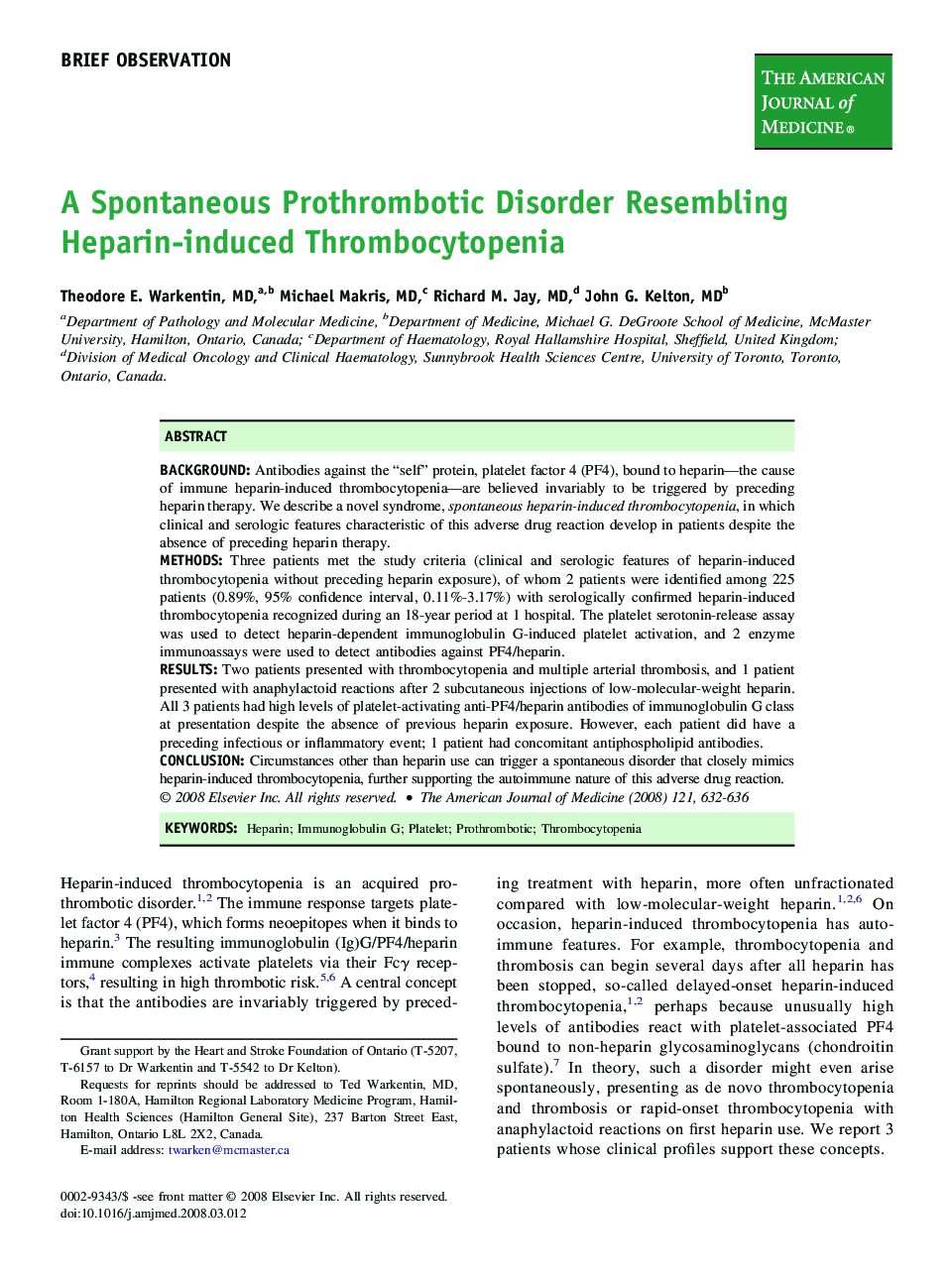| Article ID | Journal | Published Year | Pages | File Type |
|---|---|---|---|---|
| 2724907 | The American Journal of Medicine | 2008 | 5 Pages |
BackgroundAntibodies against the “self” protein, platelet factor 4 (PF4), bound to heparin—the cause of immune heparin-induced thrombocytopenia—are believed invariably to be triggered by preceding heparin therapy. We describe a novel syndrome, spontaneous heparin-induced thrombocytopenia, in which clinical and serologic features characteristic of this adverse drug reaction develop in patients despite the absence of preceding heparin therapy.MethodsThree patients met the study criteria (clinical and serologic features of heparin-induced thrombocytopenia without preceding heparin exposure), of whom 2 patients were identified among 225 patients (0.89%, 95% confidence interval, 0.11%-3.17%) with serologically confirmed heparin-induced thrombocytopenia recognized during an 18-year period at 1 hospital. The platelet serotonin-release assay was used to detect heparin-dependent immunoglobulin G-induced platelet activation, and 2 enzyme immunoassays were used to detect antibodies against PF4/heparin.ResultsTwo patients presented with thrombocytopenia and multiple arterial thrombosis, and 1 patient presented with anaphylactoid reactions after 2 subcutaneous injections of low-molecular-weight heparin. All 3 patients had high levels of platelet-activating anti-PF4/heparin antibodies of immunoglobulin G class at presentation despite the absence of previous heparin exposure. However, each patient did have a preceding infectious or inflammatory event; 1 patient had concomitant antiphospholipid antibodies.ConclusionCircumstances other than heparin use can trigger a spontaneous disorder that closely mimics heparin-induced thrombocytopenia, further supporting the autoimmune nature of this adverse drug reaction.
